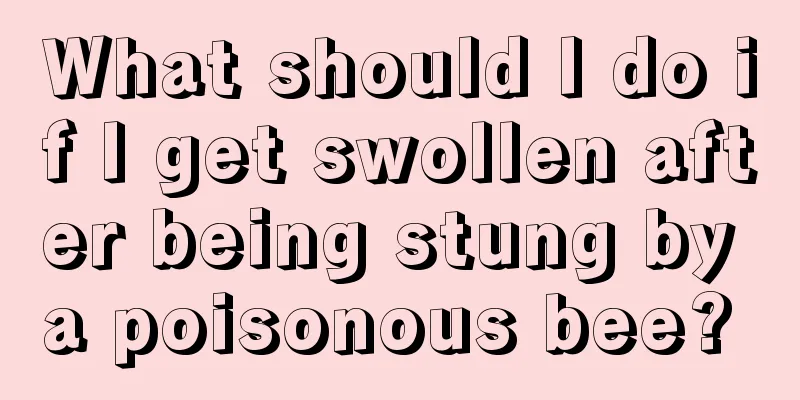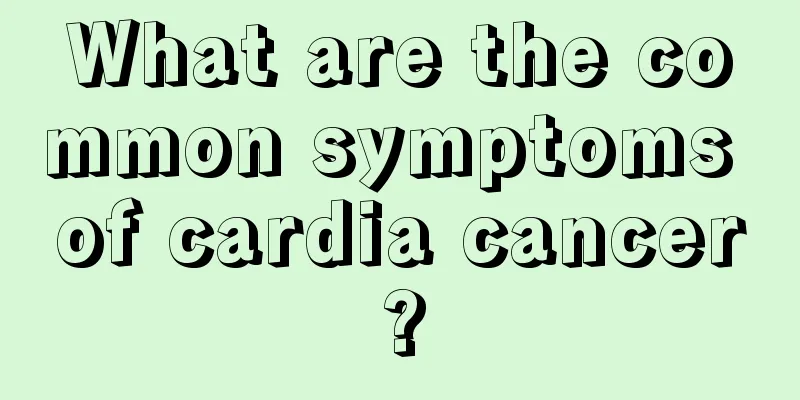What should I do if I get swollen after being stung by a poisonous bee?

|
Being stung by a bee is a very common phenomenon, especially during the blooming season every year. Everyone must be careful when going out. If you are unfortunately stung by a poisonous bee and swollen, the venom of poisonous bees is generally quite toxic. Local pain will occur after being stung. Generally, anti-allergic ointment can be applied. If the symptoms are severe, it is best to seek medical attention as soon as possible, because severe cases may cause vomiting, dizziness, and even shock. What should I do if I get swollen after being stung by a poisonous bee? A mild sting only takes three steps Remove the bee sting After being accidentally stung by a wasp, be sure to carefully check the wound. If the wasp stinger still remains on the skin, you can pick it out with a needle or tweezers, but do not squeeze it to avoid the toxin entering the body. Scrub the wound Because the venom of hornets is weakly alkaline, it is necessary to rinse it with an acidic solution, such as vinegar or 1% acetic acid to scrub the stung area. In addition, there is a folk remedy of using urine to flush the wounds of wasp stings. Because human urine is weakly acidic under normal circumstances, it has a certain effect and can be used in emergency situations. Ice compress After completing the above two steps, you can apply ice to the sting to reduce pain and swelling. If the pain is more severe, you can take some painkillers. Moderate stings, or mild stings where the venom tends to spread After a moderate sting, you can immediately squeeze the stung area with your hands to squeeze out as much venom as possible to greatly reduce redness, swelling and allergic reactions, or wash the stung area with a weak acidic liquid to neutralize the alkalinity of the bee venom, reduce its toxicity, and also have a pain-relieving effect. If you have onions, you can wash them, slice them and apply them to the wound. In addition, you can also use breast milk, wind oil, cooling oil, etc. to remove bee venom. (Do not use mercurochrome or iodine to apply, as this will increase the redness and swelling of the wound) Severe stings, emergency treatment If you develop fever, headache, vomiting, abdominal pain, diarrhea, or difficulty breathing, rough breathing, or wheezing after being stung, you should go to the hospital immediately. On the way to the hospital, you can tie a tourniquet near the wound and loosen it every 15 minutes (the ligation time should not exceed 2 hours). |
<<: What are the benefits of fumigating a room with mugwort leaves
Recommend
Why does my tooth hurt after drinking alcohol?
Drinking is an increasingly common social behavio...
What are the symptoms of sunken eyeball due to orbital fracture
Orbital fractures can easily cause sunken eyeball...
Can people with high cholesterol eat abalone?
We know that fish is particularly good for our bo...
What is the best medicine for glaucoma
Glaucoma is a common eye disease in our lives. Th...
What foods can effectively promote blood circulation?
The human body can only remain healthy when the b...
What are the signs of ovarian cancer recurrence
Ovarian cancer is the most common gynecological m...
What exercises can I do one year after kidney cancer surgery
The most important thing after suffering from a d...
What is the fastest way to treat HPV58 positive
Medically, HPV58 infection can be effectively cur...
What are the symptoms of acute myocardial infarction?
Acute myocardial infarction is a particularly har...
What are the effects and functions of silkworm feces pillow
I wonder if you have ever heard of silkworm feces...
Analysis of the methods for checking fibroids
What are the methods for analyzing the examinatio...
Tetracycline eye ointment for rhinitis
Some people have rhinitis without realizing it an...
Do you know the differences between tracheitis and bronchitis?
In real life, tracheitis and bronchitis belong to...
How to treat early stage nasopharyngeal cancer
Early nasopharyngeal carcinoma clinical recommend...
Talk about the manifestations of fibroids
In daily life, fibroids are very common. When thi...









